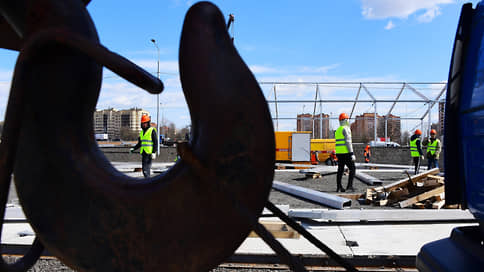The volume of new budget expenditures on social initiatives is 2.7 trillion rubles. until 2030
[ad_1]

Almost half of the additional budget expenditures outlined yesterday in the president’s instructions for the implementation of the message will have to finance four new social national projects. Over the next six years, 2.7 trillion out of 6 trillion in new budget expenditures will be spent on stimulating the birth rate, helping the poor and elderly, on medical and educational infrastructure and other similar purposes. The main emphasis here is not on “distributing” money to the population, but on the repair and construction of hospitals, schools and hostels.
The estimated volume of new budget expenditures on social initiatives, which Vladimir Putin announced a month ago in his message to the Federal Assembly, is 2.7 trillion rubles. for the period until 2030, follows from instructions from the President to the Government. Most of this money will be spent on financing the construction of health care institutions, schools and hostels.
Let us recall that in his message the president not only announced the extension of a number of national projects in the social sphere launched in 2018, but also proposed several new ones. Now, in addition to instructions for filling these new projects, the president has also set two general tasks in the social sphere: by 2030, the government must ensure an increase in the share of wages in the gross domestic product compared to 2023, and also achieve a reduction in the poverty level to below 7%.
Regarding the first task, it is worth noting that at the end of 2022, the share of wages in GDP decreased to the minimum values of recent years – to 39% (see “Kommersant” dated October 9, 2023). It can be assumed that its growth after 2023 will become restorative and logical, including thanks to a gradual increase in the minimum wage. As for the poverty level, at the end of 2023 this figure dropped to 9.3%, and its further reduction to the target level within six years seems quite likely.
For the first of the new national projects being launched, “Family,” the instructions state that the goal is “sustainable growth in the birth rate by 2030.” The vague wording of this paragraph suggests that the authorities realistically assessed their ability to control the birth rate in the country. Let us clarify that in the world there are no reliable cases of public administration that, through its actions, have achieved a sustainable and significant increase in the birth rate (without replacing the indigenous population with migrants).
It also follows from the instructions that the new national project involves further expanding the use of the social contract – this tool has existed since 2018 and has been successfully used to reduce poverty. Also part of the national project “Family” will be the introduction of a long-term care system. So far, the description of its planned parameters shows only the number of participants (500 thousand people), but not the volume of possible budget expenditures. This likely reflects the incompleteness of the government’s debate on this issue. The total amount of financing required to operate the system for such a number of clients, according to experts, could be 300–600 billion rubles. annually.
Another new national project for which instructions have been given is “Long and Active Life.” Its financing will exceed 1 trillion rubles. for the period up to 2030. It, in fact, represents a “repackaged” national project “Healthcare”, since it also aims to further modernize hospitals and clinics, and develop federal projects to combat the most deadly diseases (such as cardiovascular, oncological and infectious diseases).
The national project “Youth and Children,” similar to the previous one, aims to update the infrastructure (in this case, educational infrastructure) for a total amount of 500 billion rubles. Part of its events will be devoted to updating the professional standards of teachers in general education institutions.
Finally, the fourth new social national project – “Personnel” – will require over 600 billion rubles for implementation. The main items of expenditure will be the repair and re-equipment of secondary educational institutions, as well as student dormitories. In addition, as part of the national project, it is planned to build at least 40 university campuses and at least 50 engineering schools. The main goal of “Personnel”, therefore, can be called ensuring the attractiveness of secondary education, which generally responds to the demand of the labor market for “blue collar” workers.
[ad_2]
Source link






